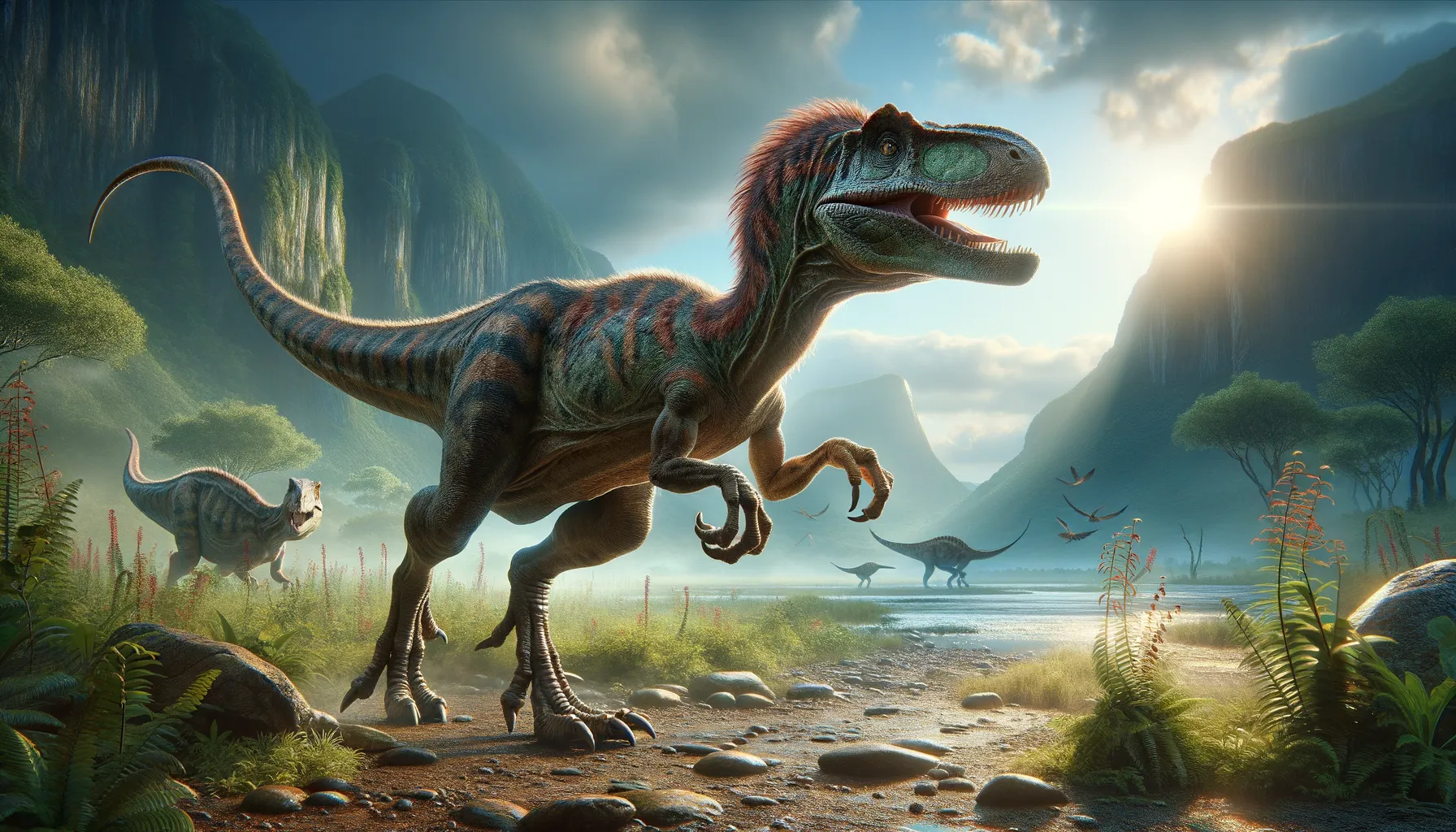
Variraptor
The nimble thief of the Late Cretaceous!
Period
Cretaceous
Length
Estimated to be around 2 meters long.
Height
Approximately standing at 1.5 meters tall.
Weight
Estimated to weigh around 45-70 kilograms.
Variraptor was a small, agile theropod dinosaur from the Late Cretaceous period, known primarily from fossils found in Southern France. Its name derives from the Latin 'varius', meaning varied, and 'raptor', meaning thief. This dinosaur is recognized for its relation to the dromaeosaurs, a group of bipedal carnivores. Despite having limited fossil records, it has provided key insights into the diversity of European theropods during the Cretaceous.
Diet
Variraptor was carnivorous, feeding primarily on small animals. Its diet likely included small vertebrates, such as mammals and other small dinosaurs.
Hunting
It likely used its agility and speed to ambush prey. Variraptor may have employed stealth tactics, taking advantage of vegetation for cover during hunts.
Environmental challenges
Living during the Late Cretaceous, Variraptor faced challenges such as fluctuating climates and volcanic activity. These environmental factors would have influenced its habitat and food availability. Competition for food from other small to medium-sized predators would have also been a constant challenge.
Speed
Estimated to be agile, with moderate running speed.
Lifespan
Likely similar to other theropods, around 20-30 years.
First discovery
First discovered in the 1990s in France.
Fun Facts
- Variraptor was a small, bird-like dinosaur that lived during the Late Cretaceous period.
- It was discovered in southern France and is known from only a few fossilized bones.
- Variraptor is believed to have been a carnivore, likely feeding on small animals and possibly insects.
- This dinosaur is estimated to have been about the size of a turkey, making it quite nimble and agile.
- The name Variraptor means 'Vair's thief,' named after the region where it was discovered.
- Variraptor's fossils were unearthed in the 1990s, highlighting the continuous nature of paleontological discoveries.
- Though not much is known about Variraptor, its discovery contributes important information to the understanding of dinosaur biodiversity in Europe.
Growth and Development
Like other theropods, Variraptor probably underwent rapid growth during its early years. It would have reached maturity relatively quickly to compete in its environment. The growth patterns of Variraptor could provide insights into the life history strategies of small theropods.
Habitat
Variraptor inhabited what is now Southern France, an area that was more subtropical during the Late Cretaceous. Its environment consisted of lush forests and river systems, providing abundant resources. The region's climate changes would have impacted its way of life significantly.
Interaction with other species
Variraptor likely interacted with various other dinosaurs sharing its habitat, both prey and potential predators. Competitive interactions with other carnivorous species would have been a natural part of its existence. Interaction with herbivorous dinosaurs may have included opportunistic scavenging.
Natural lifespan
Its natural lifespan was estimated to be around two to three decades.
Reproduction
Reproduction in Variraptor likely involved laying eggs, as with other theropods. Nesting habits might have included the construction of nests in hidden or protected areas. Parental care might have been involved, though direct evidence is lacking.
Social behaviour
Variraptor's social behavior is not well documented, but it might have been solitary or lived in small groups. It was possibly more social during breeding seasons or juvenile stages. If it hunted in pairs or groups, this could have facilitated capturing larger prey.
Fossil locations
Fossils of Variraptor have primarily been found in Southern France. The discovery includes partial skeletal remains, such as bones and vertebrae. These fossils provide crucial evidence for the diversity of Late Cretaceous theropods in Europe.
